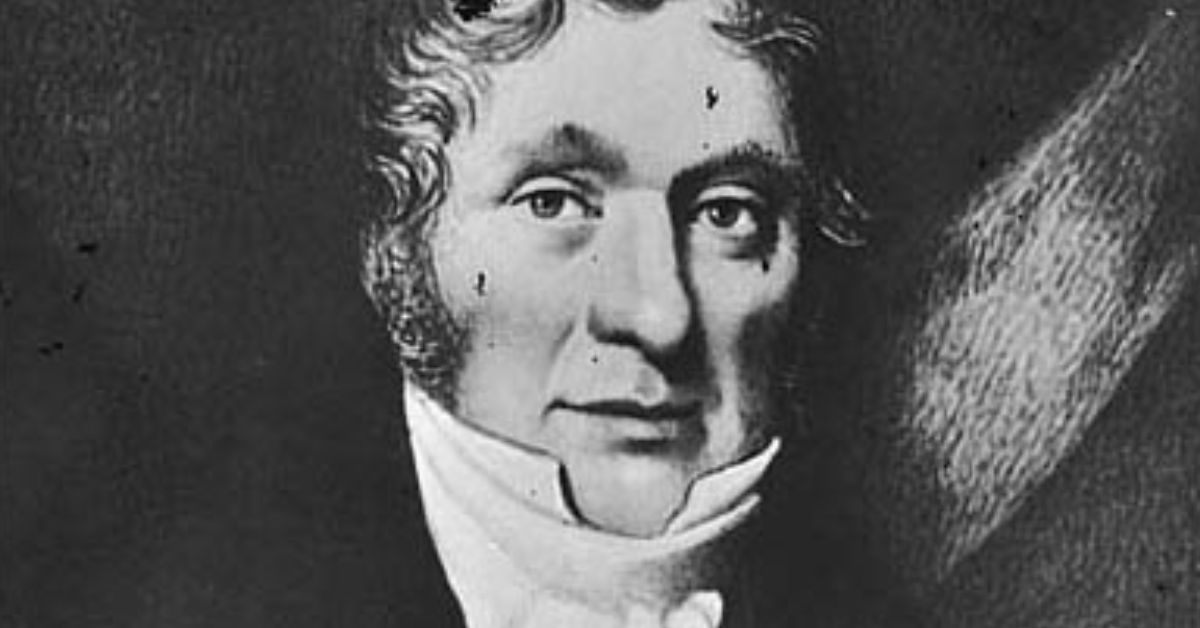The suburb of Redfern borrowed its name from Dr William Redfern, a surgeon from England who arrived in Sydney at the turn of the 19th century as a convict. He later became friends with then-Governor Lachlan Macquarie and was granted 100 acres of land in 1817.
Redfern’s early life
Born in 1774, Redfern was raised in Trowbridge, Wiltshire, England. He worked as a surgeon’s apprentice to his older brother Thomas before passing the examination of the London Company of Surgeons in 1797 and was later commissioned as a surgeon’s mate in the Royal Navy.
He was aboard H.M.S. Standard when its crew participated in the Nore mutiny to seek redress for their special grievances. For being part of the ill-fated mutiny, Redfern was among those who were tried by court-martial. He was later sentenced to death but was granted reprieve because of his youth.
After four years of being in prison, Redfern was sent to New South Wales and reached Sydney in 1801. He was immediately granted pardon and transferred to the newly established colony at Norfolk Island where he worked as an assistant surgeon.
On 19 June 1803, he was granted a full pardon by Governor Philip Gidley King. He remained on the island for five years, performing his role as an assistant surgeon before returning to Sydney.
Life in New South Wales
Upon his return, Governor Joseph Foveaux appointed him the role of an assistant surgeon but at the time he had no documentary evidence to show his professional qualifications.
A special tribunal consisting of Principal Surgeon Thomas Jamison, Surgeon of the New South Wales Corps John Harris, and Assistant Surgeon to the Corps William Bohan examined his level of knowledge in “Medicine, Surgery and other necessary collateral Branches of Medical Literature”.
William Redfern was found “qualified to exercise the Profession of a Surgeon etc.” and was given a certificate on 1 September 1808, the first medical diploma issued in Australia. That examination established a system of testing that has been used for many years.
Following his appointment, he commenced performing his role at Dawes Point. The crowded hospital at the time was already in a state of disrepair and lacking even in basic necessities. At times, patients were without blankets and their diet would consist of ordinary salt rations.
As his first public works project, Governor Lachlan Macquarie built the Sydney Hospital to replace the old, dilapidated hospital. It was opened in 1816 with Redfern appointed in charge whilst its principal surgeon, D’Arcy Wentworth, occasionally visited it as a consultant.
The establishment of the new hospital, however, did not put an end to the awful conditions that existed in the old hospital including insufficient food rations, poor sanitation, and inadequate care provided by the unreliable and dishonest staff.
Redfern Did Not Become Principal Colonial Surgeon
In 1818, D’Arcy Wentworth resigned from the position of Principal Colonial Surgeon and Macquarie recommended Redfern for the position. The position was ultimately given to James Bowman, a surgeon of the Royal Navy.
Out of disappointment, Redfern resigned from the Colonial Medical Service in 1819. That same year, Governor Macquarie appointed him a magistrate for the whole of the colony which was strongly opposed by Commissioner Bigge.
Commissioner Bigge brought the issue with the Secretary of State for the Colonies claiming that Redfern “displays an irritability, or rather a violence of temper, both towards his inferiors and superiors” and hence not suitable for the magistracy. Redfern’s appointment did not get approval and he was removed from office.
His private practice and service to the community
Redfern was the most sought-after doctor in the settlement regardless of social class. He was also the family doctor for both Governor Bligh and Governor Macquarie. His professional skills were highly regarded even by his medical colleagues including the Principal Surgeon D’Arcy Wentworth.
William Redfern played an active part in the growth of New South Wales, actively participating in social, philanthropic and business initiatives. He was the Benevolent Society’s honorary medical officer, a member of its committee and that of the Aborigines’ Institution. He was also one of the first directors of the Bank of New South Wales.
He also played an active role in protecting the status of the emancipist class.
In 1817, a ruling of the King’s Bench denied persons who served their sentence in NSW and were already freed by governor’s pardon the right to maintain personal action at law or own property. This was followed by a decision by Judge Barron Field in Sydney in 1820.
The following year, Redfern and Edward Eagar sailed for England to appeal the ruling. The delegation was successful in their efforts and their petition was granted and the ruling was rectified via the New South Wales Act 1823.
Seven years after retiring from private practice, William Redfern died on 17 July 1833.
On his retirement, a farewell notice from the Sydney Gazette (September 6, 1826) stated that “his method, or his manner…may not be so winning or seductive as might be wished, but then his experience, his skill, and his practice, in our judgement, make ample amends for any apparent absence of overflowing politeness.”
Published 16-March-2023




